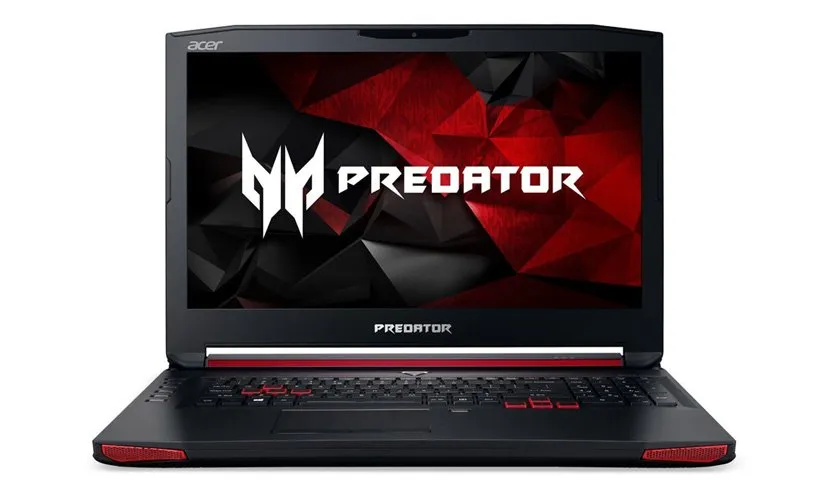
Crypto currency mining may be just about making profit for some people, but for others it may actually allow them to get a high-end computer and have the computer pay for itself back over time by mining when you are not using it. This also applies to just upgrading your old computer with a new processor or a video card, but in order for this to work out properly you still need some proper planning. Recently I got a question if this can also be done with a high-end gaming laptop essentially paying itself back by mining, even if not in full at least partially over time. This is not that easy question and the answer is it depends on a lot of different factors, there are also some things you need to be careful with and be well aware of especially when talking about laptops and crypto currency mining. So let me get started by telling you that I will actually use an Acer Predator 17 gaming laptop to show you some numbers and talk about what you can expect with real results and what you should and should not do.
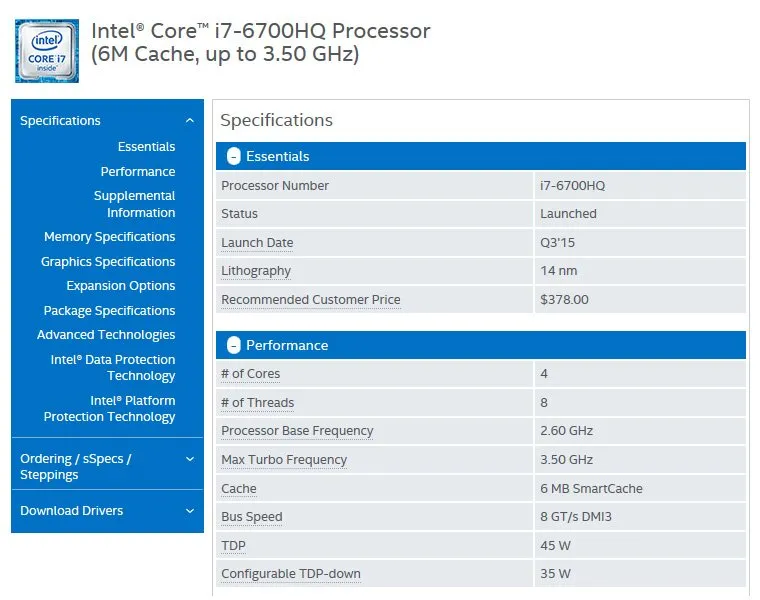
The CPU (Processor)
The Acer Predator 17 laptop I'll be using is equipped with an Intel Core i7 6700HQ CPU. That is a high-performance quad-core mobile processor from Intel with HyperThreading support (4 physical cores - 8 logical threads) that comes with a maximum power consumption of 45W. The base operating frequency of the processor is 2.60 GHz, though it can be automatically boosted up to 3.50 GHz and it actually does work at pretty high operating frequency with the Turbo Boost active even at heavy load and high temperatures as you would see. The idea is that the CPU is quite powerful and offers very good performance for a mobile solution that can be found in a laptop, even though here we have a high-end gaming laptop.
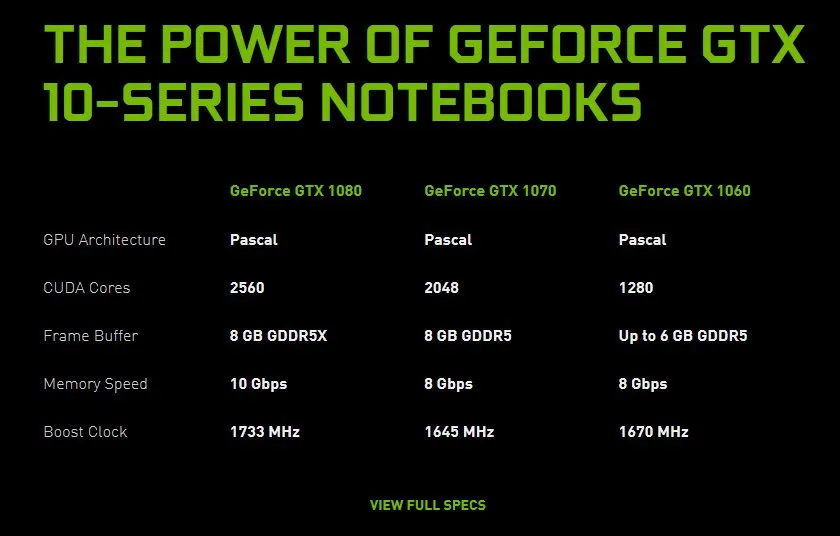
The GPU (Video Card)
The video card of the laptop is a brand new Nvidia GeForce GTX 1070 GPU and Nvidia did something really interesting with their latest generation of Notebook-based Pascal GPUs. They have dropped the M for Mobile version of the GPU, meaning that hardware and performance wise the Pascal video cards used in gaming laptops are now pretty much as powerful as their desktop counterparts. Previously the M-based mobile versions of GPUs from the company were actually a stripped down variation of the desktop version in order to have them more energy efficient. Interestingly enough the GTX 1070 GPUs in gaming laptops such as the Acer Predator 17 actually do come with a bit more CUDA Cores than the desktop model, though their operating frequency is a bit lower so still the performance you can expect s pretty much the same for both the mobile and the desktop version. As you probably know the GTX 1070 is one of the most recent Nvidia GPUs that is preferred for use by miners do the very good price/performance/power usage ratio it offers for an Nvidia GPU.

So Let Us Try Mining Now
If you want to try mining crypto currencies at the moment the most likely first choice would be Zcash (ZEC) due to the high profitability it offers along with the fact that even CPU mining it brings some nice results in terms of hashrate. So starting up with a CPU and GPU miner for Zcash using the latest NiceHash nheqminer the results I got are about 27 H/s for the processor and another 30.4 H/s form the video card. The total hashrate is roughly about 57.4 H/s and it would've been pretty good until about a week ago when Claymore has released his Zcash miner for AMD GPUs and has since been optimizing it and increasing performance for AMD-based video cards. Since there hasn't been much development regarding Nvidia CUDA performance improvements in the Zcash miners, unlike for AMD, at the moment the less than 60 H/s total hashrate is going to be making us only about $1.87 USD per day. Not much at the moment, but there could be other more profitable crypto coins to mine at the moment that should provide better profitability, right?

The Problems With Mining on a Laptop
Before continuing about more tests and options for how and what to mine let me first tell you about what problems can you expect when mining with a laptop, even when it is a high-end gaming one. Just like with regular computers when used for crypto currency mining you will get the processor and the video card stressed a lot and pushed often to their maximum, so if you do not have proper cooling you might start having issues with them overheating. Normally gaming laptops have a more serious cooling solution as they use higher-end hardware that needs more power and generates more heat, but there are still problems and for them you can blame equally both Intel and Acer or just about any other manufacturer of gaming and not only gaming laptops.
I'm starting with the processor and more specifically the operating temperatures of the CPU when it is mining Zcash and is under 100% load from the miner software. Just take a look at the temperatures that the CPUID HWMonitor software reports for the processor's cores... 76 degrees for the coolest and all the way up to 98 for the hottest one. That is pretty damn hot operating temperature, especially for the hottest CPU core and you should normally try to avoid getting things so hot. The funny thing is that even though the operating temperature is pretty high, Intel is still using Turbo Boost to increase the frequency of the processor to almost 3.1 GHz. The processor is apparently trying to fit in the power usage limit of 35 Watts and is not caring much for the high operating temperatures. On short term this should most likely not cause problems, but on the long term if you plan on mining on the CPU of the laptop long term you can start to have problems. It has been like that with the last few generations of mobile processors for Intel and they apparently do not have much problems running at high operating temperatures and still using Turbo boost, but as I've already mentioned on the long term that can cause hardware problems.

Moving on to the GTX 1070 GPU and having the video card also mine for Zcash (ZEC) along with the processor. As you can see the operating temperature of the GPU is at more reasonable level a just about 72 degrees with the card also running at boost frequencies and completely stable. High-end gaming GPUs have been better taken care of when talking about cooling inside gaming-grade laptops, so they can provide optimum performance to the user without causing issues with overheating. With gaming laptops it is like the manufacturers don't consider the possibility that the processor can be constantly loaded at 100% for a long time, but they do consider that option for the video card. While this may be true when gaming where the game utilizes more the video card than the full capabilities of the multi-core processor, with mining you can easily get 100% load on both subsystems. Interestingly enough the video card still manages to sustain operating temperature of 72 degrees even with the CPU at 0% load, so it is probably set as a maximum operating temperature in the video BIOS by default. Mining only on the CPU however does still get it hot as hell relatively quickly, so the GPU cooling is really well done, unlike the CPU cooling apparently.
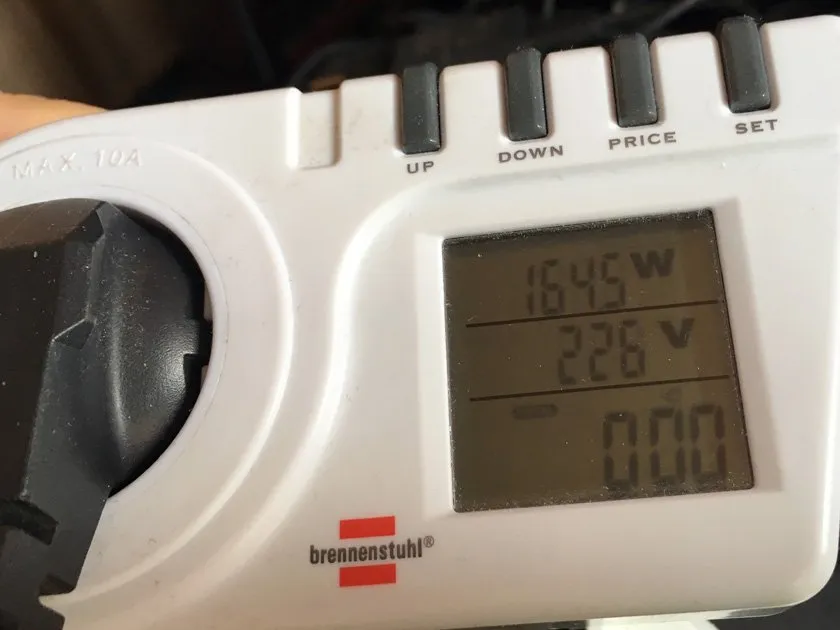
Here is how the actual power usage of the laptop looks like while it is mining for Zcash on both the processor and the video card - 164.5W total power usage. Stopping the CPU miner and I got power usage of just about 125 Watt measured at the wall (around 35W for the CPU as it is apparently limited up to that). Having an adequate idea about the power used by a mining computer is really important as it plays important role in the equation for actual profit... the power used needs to be deducted from the total value of the coins you have mined. The number I have cited above about the actual profit from mining ZEC at the moment on both the CPU and the GPU is with the power cost taken into account and deducted from the value of the mined coins.
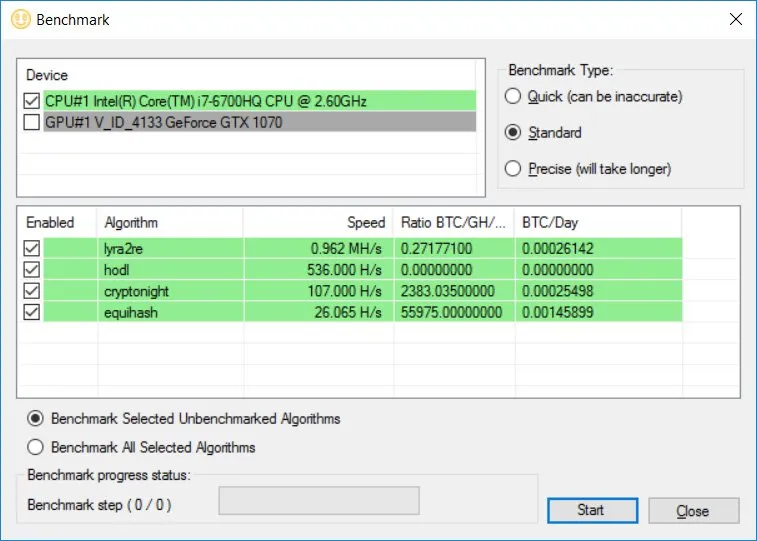
So You Are In For the Profit, But What To Do
I'm going for the easier solution for maximizing your mining profit from what you have available and that is the use of the automated NiceHash Miner that keeps track of what is the most profitable algorithm on NiceHash and switches automatically to it based on our hardware's hashrate for different algorithms. More on how you can use the software - How to Easily Mine With Your Computer and Get More Steem, A Guide for People Not Into Crypto Currencies.
The first thing you need to do with the Nicehash Miner is to benchmark your CPU and GPU available, so that the software know what hashrate you are getting for various algorithms and can use these numbers to calculate the best profitability at every moment and switch to the proper one as the prices change. With the processor there are actually not that much algorithms available and there are not that profitable most of the time as most crypto coins sooner or later get a GPU or even ASIC miner making it pointless to continue mining it with a CPU.

With GPUs you actually have much more mining algorithms to choose from, so benchmarking all of them can take some more time. Interestingly enough at the moment on a GTX 1070 video card it seems that using the Dagger-Hashimoto algorithm (Ethash used by Ethereum) is the most profitable (with the driver fix for the latest Pascal GPUs under Windows). I have already explained why Zcash is not the right thing to mine at the moment with Nvidia GPUs and the NiceHash miner just confirmed this.
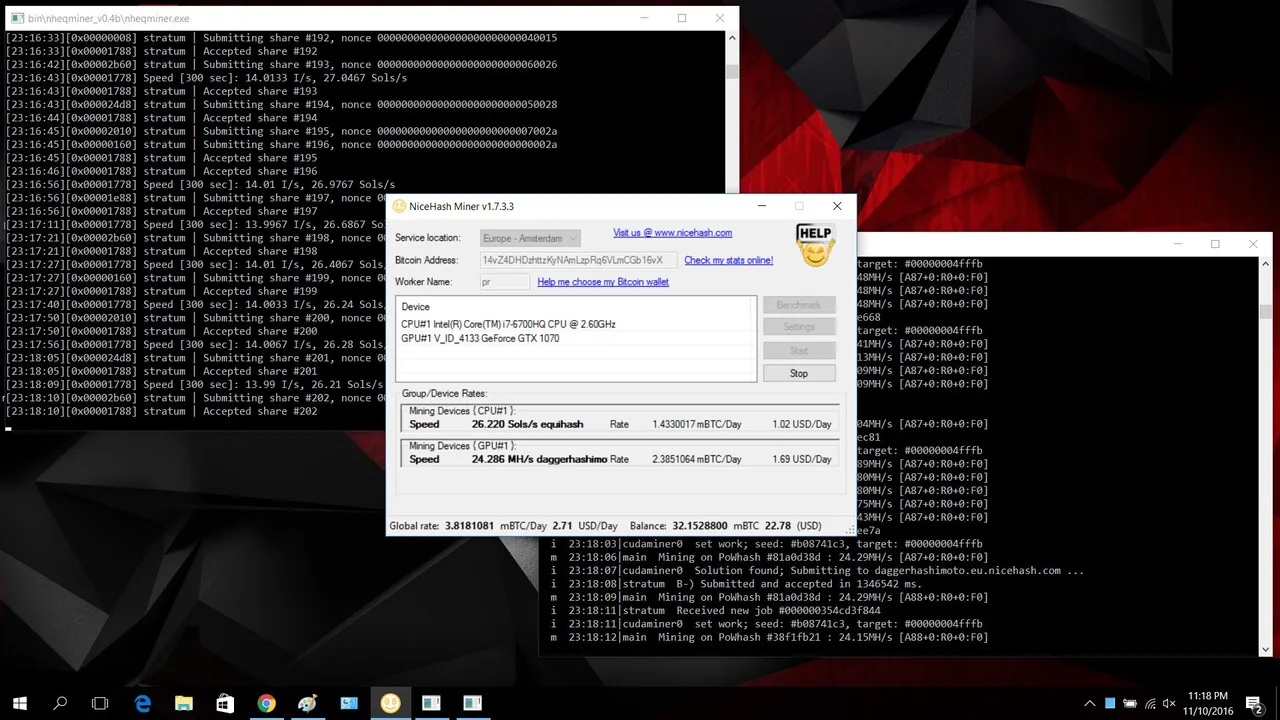
What are we getting with the NiceHash miner using the optimal algorithms for the available hardware - estimated earnings of about $2.71 USD per day or with other words better than just blindly going for Zcash on both the CPU and the GPU. Now, this may not seem that much for a day, but it is not that little actually... just multiply by 365 days and you will get something close to $1000 USD for a year. Of course the idea here is not to mine all the time, but only when you are not using the laptop and the profit will of course vary up and down over time and you still need to deduct the price of the electricity used (about 160W).
You can of course get a better chance at maximizing your profit by mining specific crypto currency and then trading it on an exchange, but it is probably not worth it if you do not have a multi-GPU mining rig(s) available and are going to be using just what a single gaming laptop is capable of providing you with. Really not worth the extra time and effort needed for the chance of some extra percent higher profit, I'm saying for the chance as trying your luck may as well give you worse results.
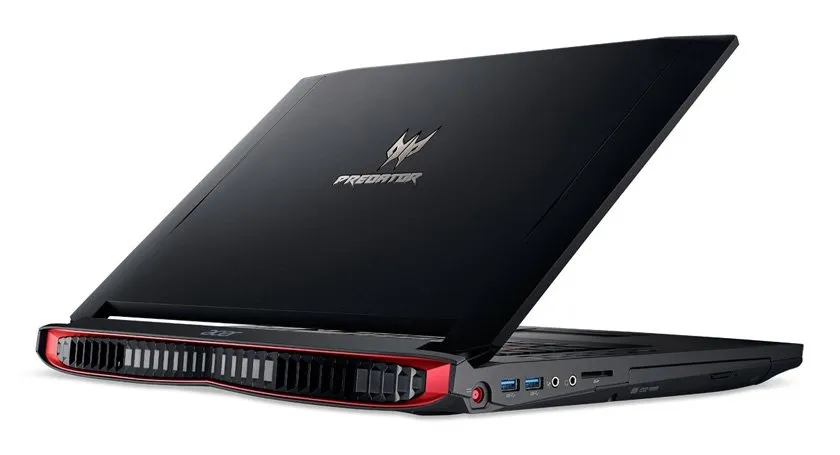
Is it Worth It in the End?
This is a tough question to answer, really. The fact is that in 2 to 3 years of time you are very likely to have mined enough or even more than what the laptop would cost you to buy at the moment (around $2000 USD or around 2200 EURO) and that goes for not mining on it all the time, but only when you are not playing games on it. Even if the total amount is not the full cost of the laptop, but only half it will still not be that bad if the laptop continues to work properly and does not cause you issues. So getting a high-end gaming laptop and using it not only to play games, but also for crypt currency mining may be a useful way to reduce the bill...
Now for the important stuff should you decide to go for a high-end gaming laptop with a powerful CPU and GPU like the Acer Predator 17 that I have used here as an example. First off I would not recommend to actually use the processor to mine with, go for only the GPU... this should result in much lower chance of having issues due to the heat generated from the laptop on the long run. This will reduce your profit, but will save you possible trouble of having to deal with warranty repairs or replacement after some time. Generally CPU mining is not very profitable most of the time anyway, though currently for Zcash the situation is still not that bad... for the moment.
One thing that YOU MUST DO, regardless if the laptop is going to be used for mining or not is to purchase an extended warranty to let us say 3 years... it will bring the cost slightly up, but will ensure that if a problem occurs you will be covered for longer period of time. With using the laptop 24/7 for gaming and mining the chances of problems on the long run increase, so having extra warranty can really help not only for your peace of mind, but also in case something really does happen.
Now, to answer the question if I would actually buy a gaming laptop and use it for mining as well in order to get back some of my investment. Normally I would not, just because I don’t like playing games on a laptop... I use it for work and not for games. The reason for this is that I actually have a dedicated high-end gaming desktop PC at home with larger display and more powerful hardware that I use for gaming (not that I have been gaming that much lately). Regarding mining, I would still go for dedicated multi-GPU mining rig, but that is just me. The option is there and the chances are that you can actually going to get some of the money you paid for the laptop in the first place back might be an attractive one for some people. Just make sure that you play things right and be careful about the things I have mentioned above should you decide to try and actually do this as this advice can actually save you some bad experiences!
If you have a question or want to add something, then please leave a comment below.
Did you like what you have just read? Check my other posts on steemit @cryptos
If you like what I'm doing for Steem and on Steemit you can support me as a Witness